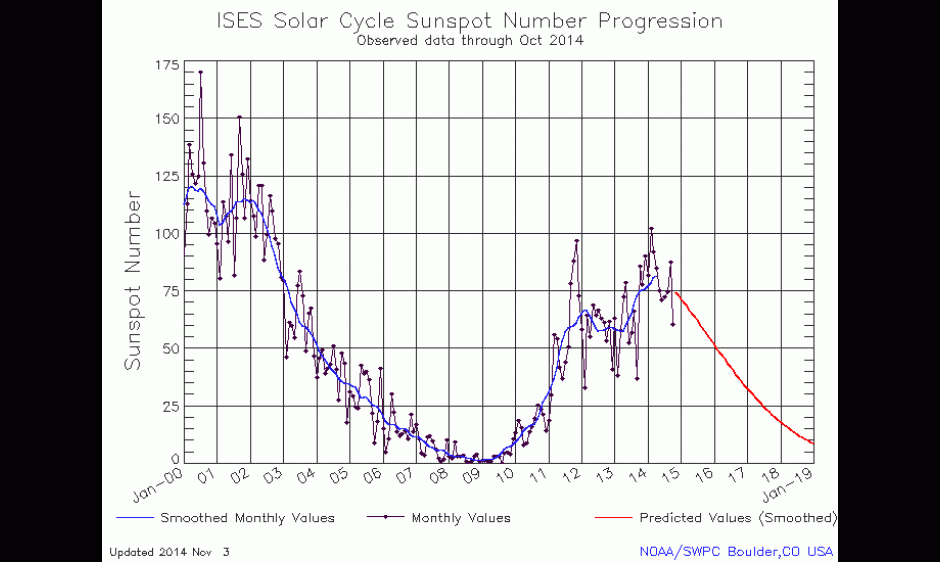
The Sun is at solar maximum! Solar Cycle 24 is seeing a second, higher peak in the sunspot number. (Updated)
The Sun is in the midst of its "maximum phase," though modest when compared with recent cycles. Data and imagery show the comings and goings of sunspots, markers of the strong local magnetic fields that cause the eruptions commonly thought of as space weather. As of now, the peak of this solar cycle was likely in April of 2014. That will only be confirmed in hindsight as we see what the coming months hold with respect to overall activity.